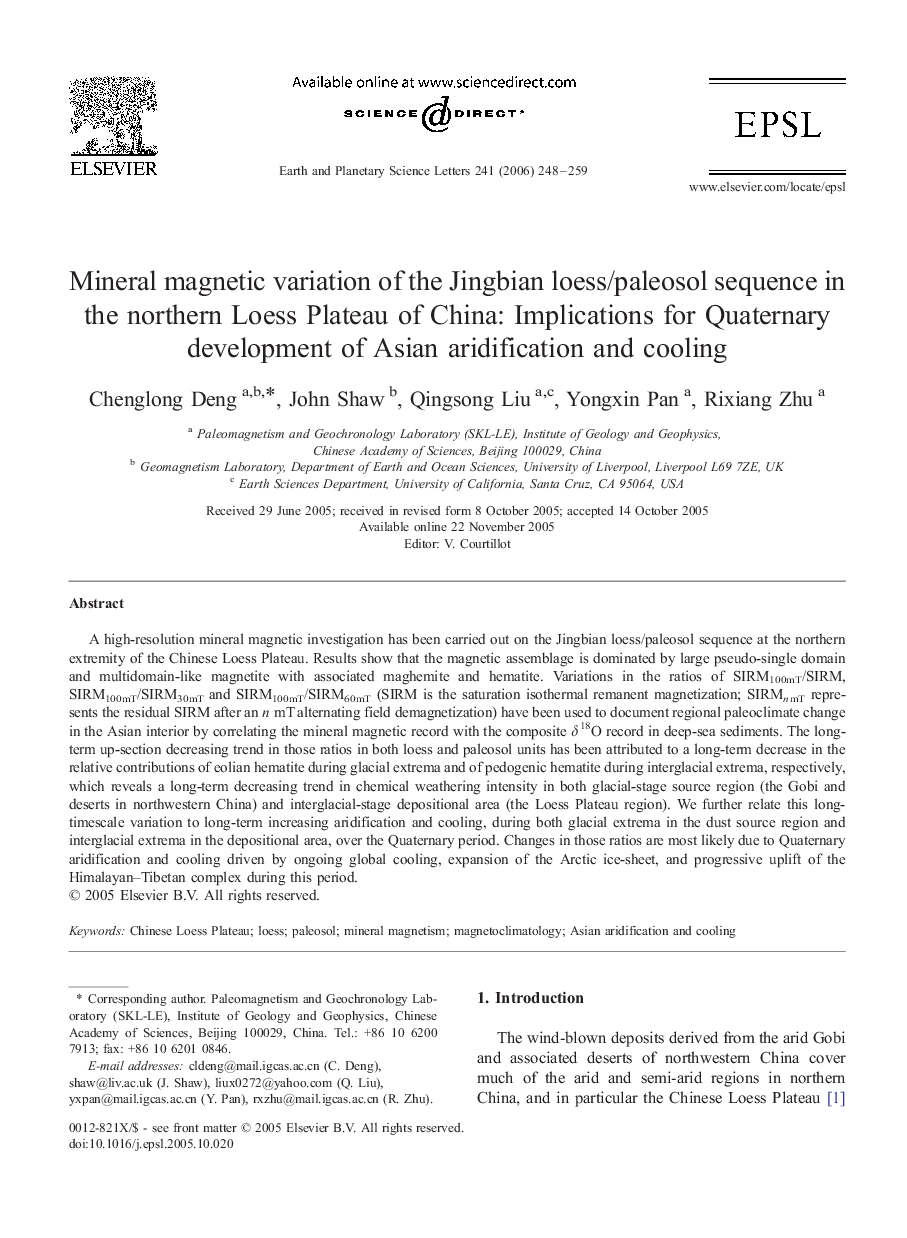| کد مقاله | کد نشریه | سال انتشار | مقاله انگلیسی | نسخه تمام متن |
|---|---|---|---|---|
| 6431262 | 1634953 | 2006 | 12 صفحه PDF | دانلود رایگان |

A high-resolution mineral magnetic investigation has been carried out on the Jingbian loess/paleosol sequence at the northern extremity of the Chinese Loess Plateau. Results show that the magnetic assemblage is dominated by large pseudo-single domain and multidomain-like magnetite with associated maghemite and hematite. Variations in the ratios of SIRM100mT/SIRM, SIRM100mT/SIRM30mT and SIRM100mT/SIRM60mT (SIRM is the saturation isothermal remanent magnetization; SIRMnmT represents the residual SIRM after an n mT alternating field demagnetization) have been used to document regional paleoclimate change in the Asian interior by correlating the mineral magnetic record with the composite δ18O record in deep-sea sediments. The long-term up-section decreasing trend in those ratios in both loess and paleosol units has been attributed to a long-term decrease in the relative contributions of eolian hematite during glacial extrema and of pedogenic hematite during interglacial extrema, respectively, which reveals a long-term decreasing trend in chemical weathering intensity in both glacial-stage source region (the Gobi and deserts in northwestern China) and interglacial-stage depositional area (the Loess Plateau region). We further relate this long-timescale variation to long-term increasing aridification and cooling, during both glacial extrema in the dust source region and interglacial extrema in the depositional area, over the Quaternary period. Changes in those ratios are most likely due to Quaternary aridification and cooling driven by ongoing global cooling, expansion of the Arctic ice-sheet, and progressive uplift of the Himalayan-Tibetan complex during this period.
Journal: Earth and Planetary Science Letters - Volume 241, Issues 1â2, 15 January 2006, Pages 248-259